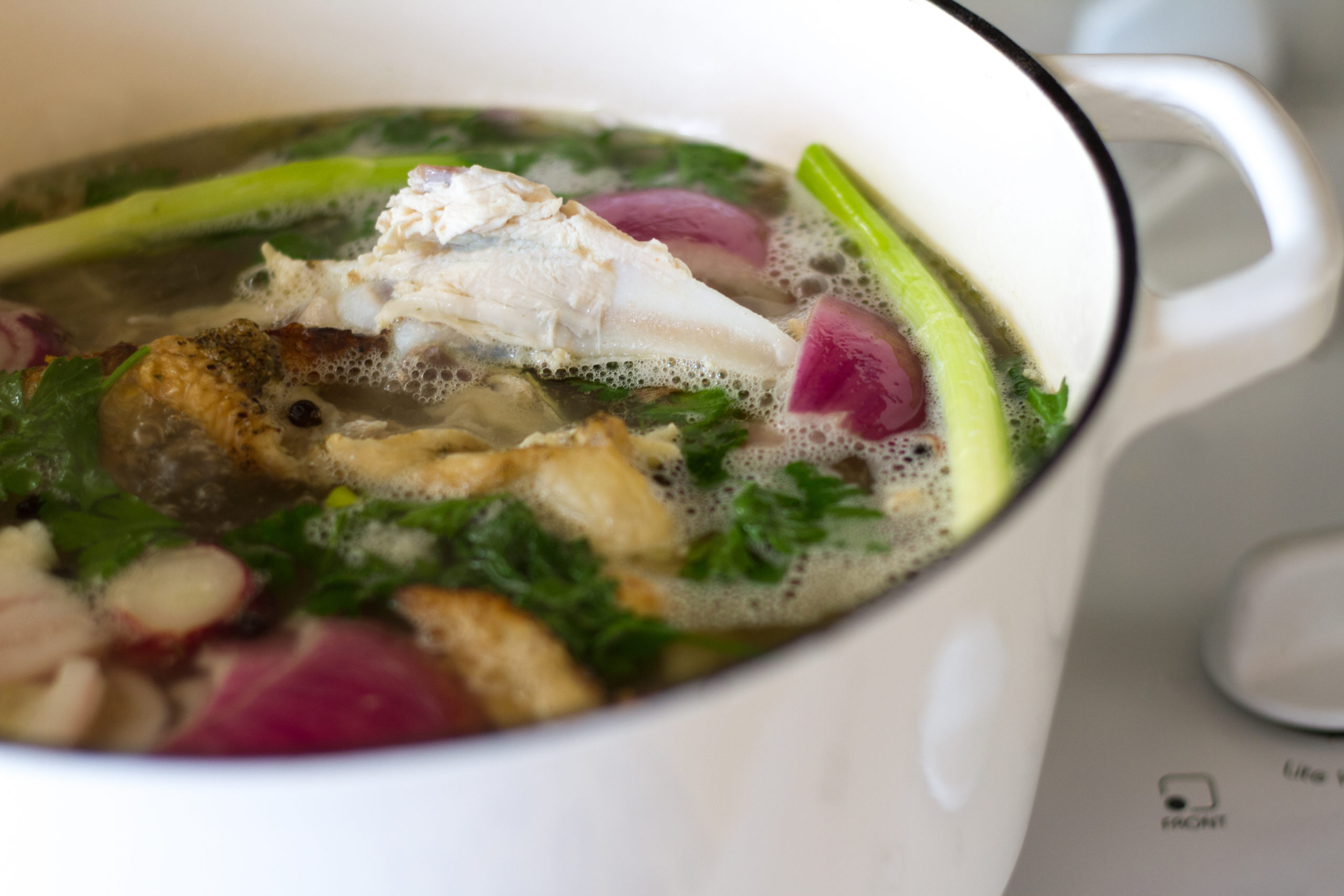MSG in your broth? Yes, this can be true- especially when using many store-bought options. Processed store-bought options contain many additives high in free-glutamate (MSG) like- monosodium glutamate itself, natural flavors, hydrolized protein, gelatin, “spices”, hydrolized soy protein, flavoring, dextrose, corn syrup, yeast extract, yeast, and even the terms “broth”, “bouillon” and “stock” as ingredients are known to often contain these higher levels.
Additionally, some amount of free glutamate can naturally be created during the process of making the broth and may be problematic for those sensitive to free glutamate. Yes, you heard that right. According to Dr. Russell Blalock, even meat juices may be problematic for some as free glutamate in the liquid form is the most damaging because it is more rapidly absorbed and can quickly spike blood glutamate levels. If you will remember, proteins contain the amino acid, glutamate. When glutamate is “bound” to the protein or in the whole form, it is rarely problematic, even for those highly sensitive to glutamate. However, glutamate often becomes problematic when the proteins are degraded and glutamate is “freed” from the protein chain. MSG is the most common form of free glutamate in our food, and the terms, free glutamate and MSG, are frequently used interchangeably.
When making broth, higher heats, longer cook times, and adding vinegar cause those proteins to degrade more rapidly and therefore create free glutamate. These levels of free glutamate only increase when the broth reaches a gelatinous state. The more gelatin, the higher the amount of free glutamate. This is why gelatin is on the list of foods to avoid for those sensitive to free glutamate. As with everything, you will want to watch for a reaction and possibly consider a food/behavior/symptom journal if you’re sensitive to free-glutamate. Broth and stocks are also higher in histamine which is often problematic to a large sub-population of those also sensitive to free glutamate.
While the recipe below is fairly basic, I prefer to keep our broth basic and adjust seasonings, herbs, and spices when I know how I will be incorporating the broth.
Ingredients
1 organic chicken carcass- previously cooked (use more meat and fewer bones for even lower glutamate)
1 large red onion (quartered)
3 celery stalks (1 celery heart optional replacement)
1 handful/bunch of parsley (no need to chop)
3 carrots
4 smashed garlic cloves
1 bay leaf
1 tsp black pepper
2 tsp Himalayan salt
14 c. filtered water
(Optional add-ins rosemary, thyme, parsnips, leeks, mushrooms, etc.)
Instructions
Wash, rinse, and chop any necessary vegetables. Combine all ingredients into a large stockpot, cover with water and add the lid. Bring water to a boil and reduce heat to a medium/low simmer. Simmer for 3 hours (cook for 60 minutes if using a pressure cooker). Remove from heat and allow for the broth to slightly cool. Using a mesh colander, strain broth, and place in airtight containers for storage. Discard bones and set aside remaining vegetables. Vegetables may be pureed back into the broth for thicker soups or discarded. Refrigerate broth for up to 4-6 days or freeze up to 6 months.
Tidbits
Freeze broth into ice cube tray or muffin pan. Once frozen, consolidate cubes into a freezer-safe bag for convenient future use. Do not feel limited to the use of chicken for this recipe. Omitting the chicken will allow for a great vegetable broth option or you can easily switch the chicken to beef, lamb, etc bones.
I tend to use red onions over yellow onions as they are high in the flavonoid, quercetin. Quercetin offers neuroprotection from glutamate (read more about this on my post here, https://nourishedblessings.com/lowering-glutamate-quercetin-flavonoid/). Dr. Russell Blaylock often refers to the benefits of quercetin in excitotoxicity.

